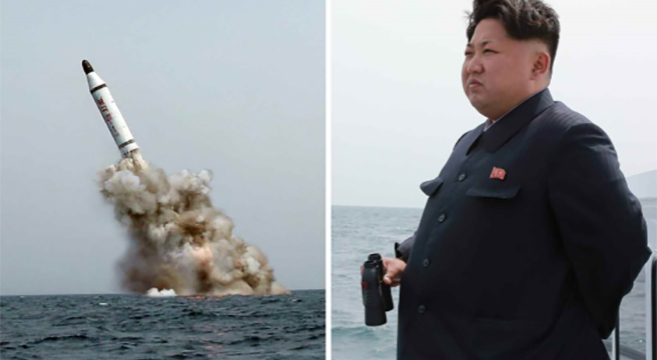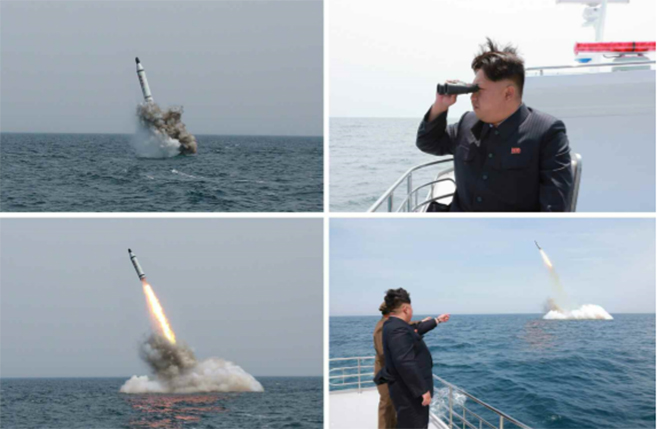On May 9, a Korean People's Army Naval Force submarine test-launched a ballistic missile off the eastern coast of North Korea. The test launch, reported by North Korea's Rodong Sinmun newspaper, only traveled about 150 meters, according to South Korean defense officials. But it demonstrated that North Korea had developed the capability of performing submerged launches of missiles well ahead of previous intelligence estimates. Based on the launch, South Korean officials now believe that North Korea could have a limited submarine-launched missile capability deployed to its fleet of submarines within the next five years.
The test comes as South Korea nears a decision on the deployment of a Terminal High Altitude Area Defense (THAAD) anti-ballistic missile system. China has been pressuring South Korea to not allow the deployment, but an earlier, barge-based test of the submarine-launchable missile (named "Polaris-1" by North Korea) on April 22 has made the deployment more likely.
Polaris-1 is apparently a close copy of a Soviet-era R-27 submarine-launched ballistic missile (SLBM), a liquid-fuel missile which had the NATO designation SS-N-6 "Serb." This is the third test launch of the missile this year, but it is the first submarine launch. Developed in apparent violation of a UN resolution banning North Korean ballistic missile development, the missile could have a range of about 1,500 miles.
The original R-27 was capable of carrying three independent nuclear warheads. An explosion of an R-27 missile caused by a reaction between a seawater leak and fuel residue aboard the Soviet "Yankee" class ballistic missile sub K-219 in 1986 off of Bermuda led to one of the most tense moments in the late Cold War (later breathlessly and inaccurately recounted in one of the worst submarine movies ever, Hostile Waters).
North Korean leader Kim Jong-un, who had previously planned to travel to Russia over the weekend but then cancelled his plans last week, was on hand to observe the launch. "He stressed that the acquisition of the technology of firing ballistic missile from a strategic submarine underwater made it possible for the KPA to possess a world-level strategic weapon capable of striking and wiping out in any waters the hostile forces infringing upon the sovereignty and dignity of Songun Korea and conduct any underwater operation," reported the Korean Central News Agency, North Korea's government news service.



 Loading comments...
Loading comments...
